Despite an enormous state police force, along with robust paramilitary forces comprising of 2,40,000 Central Reserve Police Force (CRPF); 2,10,000 Border Security Force (BSF); 1,10,000 Central Industrial Security Force (CISF); 50,000 Sashastra Seema Bal (SSB); 45,000 Indo-Tibetan Border Police and 7,500 National Security Guards (NSG), India lacked the confidence to hold the second innings of the Indian Premiere League (IPL) tournament. So, Lalit Modi, the IPL architect, opted for a South African safari. Modi & Co. argue that IPL in South Africa is better than no IPL. But, Televisionpoint.com disagrees with this populist sentiment and we will tell you why, as the ratings for the second season has dipped below expectations.
Financially, this move has translated into huge losses for the official broadcaster Sony Max, advertisers, eight franchisee owners, government revenue in the form of taxes, support businesses (including hotels, airlines and clubs) further hitting the already dwindling health of the country's economy on the whole. While speaking to industry experts, Televisionpoint.com got the cost and revenue estimates for the franchisee owners in IPL's Season 2. First, a 20 per cent fall in television rating points (TRPs); second at least 30 per cent fall in sponsorship revenues; third gate receipts, which contributed around 20 per cent in the last season, in all likelihood, will contribute zero to revenues; and fourth 20 per cent increase in administrative costs.
Low TRPs
The TAM Media data suggests that the TRPs of an IPL event have fallen at least by 20 per cent. Why ? Well, there is less hype around the tournament and fans feel less connected with the event. For the matches played from April 18-25, the average of all the eight days is 4.61 (all India) while in Hindi speaking markets, the average is 5. In digital markets, the viewership is higher - 5.9 (all India) and 6.8 in HSM. The trends are pretty much similar, nevertheless the delivery of IPL in its second season is lower than what it was in the first season.
The all India viewership of the IPL matches, which commenced on April 18, have been declining gradually, with a few exceptions. While the first match recorded a TVR of 5.1, the one on April 19 garnered a TVR of 4.7, as per TAM Sports data on C&S 4+, all India audiences. The match on April 22 between Deccan Chargers and Royal Challengers Bangalore managed to draw a viewership of 4.7, all India. Among the digital audience, the match got a TVR of 4.9. The highest viewership, 5.4, for the match came from digital homes in Hindi speaking markets. The match between Delhi Daredevils and Chennai Super Kings, held on April 23, was most viewed by the digital audience in HSM with a TVR of 6. The all India TVR for the match was 4.9.
The second match on the same day (Thursday) between Rajasthan Royals and Kolkata Knight Riders was the most watched match till date in IPL Season 2. Among the digital audience, the match garnered a TVR as high as 9.5 (in HSM) and 7.62 (all India). Among C&S households, the all India TVR was 5.4, while in HSM, it recorded 6.2. The match held on April 24, between Royal Challengers and Kings XI Punjab, got a TVR of 4.6 (all India), while in the HSM market the viewership was slightly higher. Digital homes recorded a high viewership of 5.8 (all India) and 7 in Hindi speaking regions.
The Deccan Chargers vs. Mumbai Indians match, held on April 25, received mediocre ratings - 3.5 (all India) and a TVR of 4 in HSM; while in HSM digital homes, the TVR was high at 5.6 and the all India TVR was 4.8.
Moreover, as the General Elections are being held during the same period, the viewership is divided. Sample this: On April 16, the first phase polling date, viewership for news channels shot up by 50 per cent during the General Elections. "A lot of male population that comprise a major chunk of viewership for cricket matches, are glued to their idiot box for election updates and results, which means that there are lesser number of people watching IPL at that point in time," explains Surbhi C. Murthy, branch head, Allied Media - Delhi. As the initial TRPs are below expectations, advertisers and marketers are renegotiating deals. And as the broadcast revenues are taking a hit, the event will be a dead property as the biggest source of revenues for the franchisees in Season 1 were the monies accrued from broadcast rights.
Gate Receipts
One of the biggest hit will be in losses due to accruals from gate receipts. Globally, gate receipts contribute a major chunk to the total revenue of any franchisee of sports club. About 35 per cent of the total revenue of English Premiere League (EPL) come from the gate receipts – as a matter of fact, the contribution of gate receipts to the total revenue of Tottenhan Hotspurs and Arsenal is 29 per cent and 50 per cent respectively (as per the Alchemy report, 2008). But for IPL in South Africa, the revenue stream arising out of gate receipts has taken a massive hit. Why ? Well, as IPL is more of an Indian cricketing tournament with city-based clubs, it has not been able to draw a connect with the South African people, which resulted in very few people actually buying tickets to go and watch the matches.
But industry experts feel that gate receipts will come down to zero for the franchisee owners. Agrees Naresh Gupta, strategic planning head, Publicis India, "I don't think any of the franchisees will get any revenues from gate receipts this year." This is a great loss for them because last year, gate receipts contributed around 18-25 per cent to their total revenue pie. In any case, ticket sales of these matches on the whole are supposed to be very low for who in Cape Town or Johannesburg will be interested in cheering for Knight Riders or Delhi Daredevils ?
Sponsorship Revenues
Another martyr on the block is the sponsorship revenues. Even key sponsors of the tournament are now turning down and are reconsidering their investments in the property. Reebok has already announced that it would slash its spend in IPL by 15-20 per cent and Hyundai, Havells, et al, are also chalking out similar plans. Sources from Coke say, "Though nothing has changed as of now, but we are giving our investments a second thought as the television ratings for the first and second week has been below our expectations." Nokia was the second most visible brand in the first season of IPL, next only to King Khan. But its success was attributable to the interactive advertising that the company was able to do. Nokia's spokesperson says, "The company is playing the wait game, we shall re-work our sponsorship deals, if the television ratings do not improve in coming week."
Couldn't BCCI & IPL have played a waiting game instead of the sponsors ? Holding IPL in international venue means that the on-ground sponsors like Vodafone, Nokia, Pepsi, LG, et al, would have a lot to lose. One could argue that since these are all global brands, therefore visibility in South Africa or India will mean one and the same thing. But then what about home-grown brands like DLF, Hero Honda and Havells ? A franchisee owner, on conditions of anonymity, argues, "Suppose if Dabur was one of the sponsors, so does it make an economic sense for it to have visibility in South Africa. The same logic would also hold true for the title sponsor DLF, which would also not stand to gain much from its association with IPL in this season."
Conservatives are pegging a correction of 40-50 per cent in revenues garnered from on-ground activities and say that overall sponsorships can be impacted by as much as 30 per cent. Apart from that, even merchandising and licensing deals of various franchisees would be affected by almost 40-50 per cent because of this 'slight change in plans.' "Who is wearing a Knight Riders' T-shirt and helmet while watching the match on TV," asks Mandar Natekar, head, revenue and marketing, Bigadda.com. Brijesh Patel, CEO, Bangalore Royal Challengers, admits, "The revenues from merchandising and licensing are definitely lesser than what it would have been had the tournament been played in India itself."
However, television ratings for the IPL may be down in its second season, but that's not putting off advertisers. A 10 second commercial ad spot on the Max was priced at Rs 4 lakh initially and has increased to Rs 5.25 lakh already, confirmed Rohit Gupta, president, network sales, Multi Screen Media Pvt. Ltd. "The rationale behind the increased number of brands associated with IPL despite lower ratings is that those which have invested heavily on IPL did so before the tournament began, based on last year's success." said Shubha George, managing director, Mediaedge:cia.
"Having said that, it is also important to note that while IPL ratings may be lower than last year's, it is still probably higher than anything else on TV, so it is still worth the while for brands, but the question here is, at what price ?" Shubha says.
Dark Continent Party
Take all the above into consideration and even you would arrive at the conclusion that the combined revenues of the eight franchisees this year will work out to be around Rs 390.2 crore, much below than last year when the figure was Rs 535 crore, according to Televisionpoint.com estimates.
And the total expenses on the other hand will come to Rs 670.06 crore, taking into consideration the incremental cost to be borne for acquisition of new players other than the 20 per cent escalation in administrative costs, due to the shift in venue. Had there been no IPL this season, it would have been a situation of no loss no gain for the franchisees. But, IPL in South Africa, has add more losses to their already red-smeared balance sheets.
Rakesh Singh, chief marketing officer, Chennai Super Kings, says, "BCCI has taken care of the escalated costs due to the venue shift. But the prime concern is the dip in viewership numbers, which is taking away the profit numbers." Additionally, BCCI and Modi have also promised that they would compensate the franchisees for any loss in revenues (in the form of gate receipts, in-stadia revenues, et al). But still there is no clarity on whether BCCI will compensate the franchisees completely or partially for the losses incurred. Or could this just be a gimmick that Modi is playing expecting that if the season is a hit, none of the franchisee owners will ask for compensation.
However, a BCCI insider revealed that the board planned to spend Rs 120-150 crore to compensate the franchisees. Even after that compensation the collective losses of the franchisee could well be over Rs 120 crore. So, both BCCI and the franchisees will eventually be losers. And it is not just the broadcaster, advertisers, franchisee owners and BCCI that are bearing the brunt of this shift in venue, even peripheral businesses like hotel, airlines, travel companies, clubs, et al, are hit hard. As per Televisionpoint.com research, last year, the hotel and travel industry got a boost of Rs 70 crore during IPL, which is a lost this year. Roughly 4,000 rooms per city (where the matches were held) were booked during last season. This year again the hospitality industry was looking forward to an upswing of 20-25 per cent in their occupancies and put an end to a lull period imposed on them due to the recent terror attacks.
IPL always push up sales volumes across various product categories. Take television for instance: Not only there is an increased demand from the home user segment but restaurants, fast food joints and shopping malls emerge as the biggest buyers of television sets in order to enhance footfalls. "We saw a growth of over 20 per cent in April over the same month last year. IPL was the main trigger in top 35-40 cities, for the sale of colour television sets (CTVs)," says Amitabh Tiwari, marketing head, home entertainment & B2B, LG Electronics India. Media businesses in the country are also facing a similar jolt, primarily the outdoor advertising industry. Selvel Advertising Ltd., for example, was expecting a business of about Rs 1.5-2 crore from this year's IPL.
A disappointed Noomi Mehta, chairman and managing director, Selvel Advertising, says, "Last time our business was about Rs 1 crore. This time we were more organised to serve better and do better business, but the League has gone abroad." Selvel had the rights for the display boards of Knight Riders. Apart from that, Selvel also served companies like Cadbury, Reliance's IPL campaign. Mehta says that the business coming from these accounts got adversely affected, Then again, there is also be a fall in government revenues through various taxes (entertainment tax, service tax, et al). Last year, the government earned Rs 90 crore from taxes deducted at source (TDS) alone. A senior official in Delhi & District Cricket Association said that the Delhi government alone suffered a loss of Rs 50 crore this year in the form of all taxes from IPL. It was expected that this season of IPL would bring in fresh air of resurgence into the ailing economy, which is currently going through a rough patch. Moreover, the last season of IPL had witnessed so much euphoria that people across sectors were hoping for this season to clear the negative vibes in the air.
Courtesy - Televisionpoint
Friday, May 1, 2009
Subscribe to:
Post Comments (Atom)


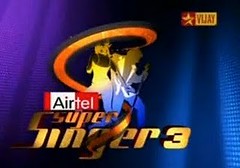

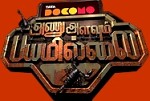


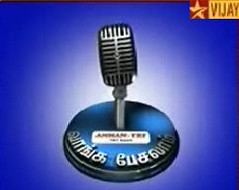


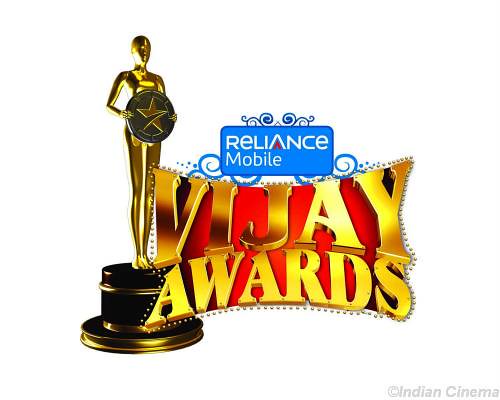

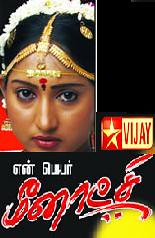



No comments:
Post a Comment